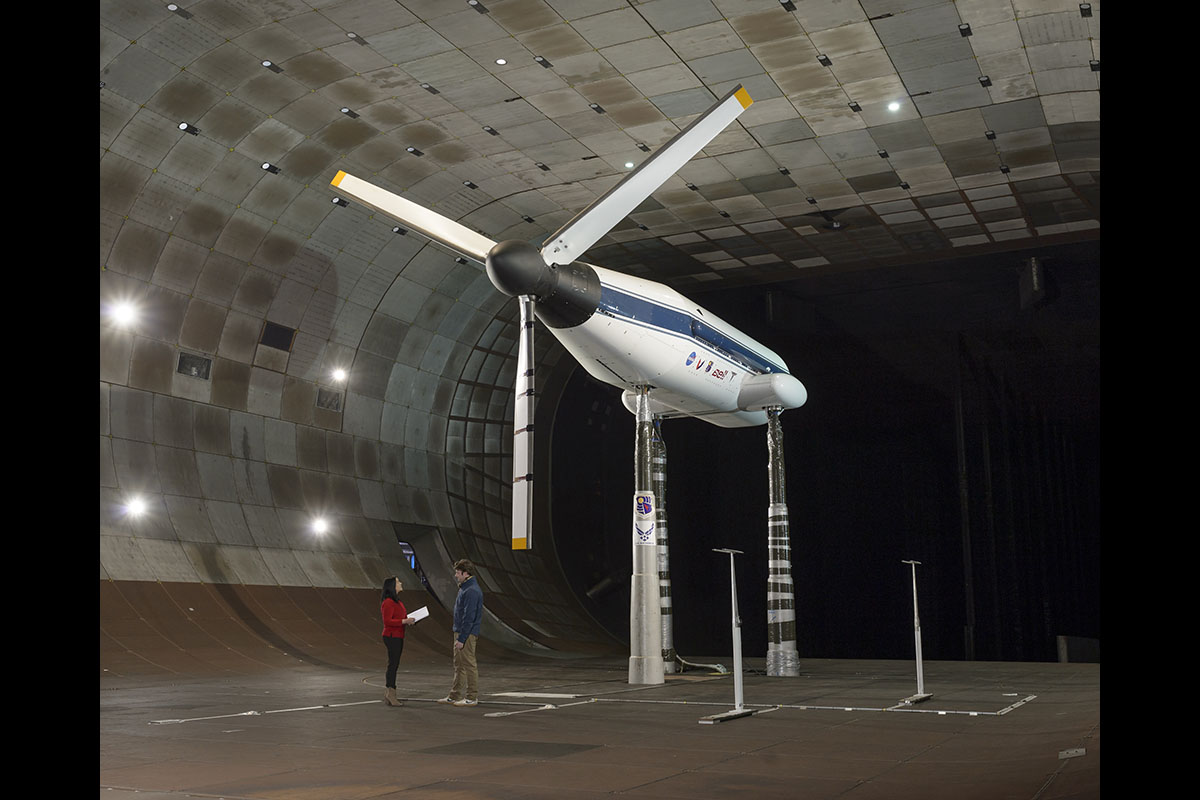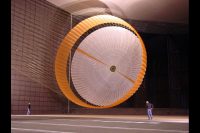The Tiltrotor Test Rig, a test bed developed by NASA to study advanced designs for rotor blades, is seen in the 40- by 80-foot test section of the National Full-Scale Aerodynamics Complex in November 2017. (NASA/Ames Research Center/Dominic Hart)
Home The Tiltrotor Test Rig, a test bed developed by NASA to study advanced designs for rotor blades, is seen in the 40- by 80-foot test section of the National Full-Scale Aerodynamics Complex in November 2017. (NASA/Ames Research Center/Dominic Hart) The Tiltrotor Test Rig, a test bed developed by NASA to study advanced designs for rotor blades, is seen in the 40- by 80-foot test section of the National Full-Scale Aerodynamics Complex in November 2017. (NASA/Ames Research Center/Dominic Hart)



